- Best Soaker Hose Options Your Yard Truly Needs This Year - January 5, 2024
- Best Tomato Planters You Should Really Consider for Your Garden - December 21, 2023
- Best Home Depot Tomato Cages to Support Your Plants - December 16, 2023
Unlike strawberries, you have choices for when to pick tomatoes. Strawberries should only be picked when perfectly ripe, but tomatoes, on the other hand, have what I like to call a grace period.
This means there are several stages of ripening that last quite a few weeks, and you can pick a tomato any time during these stages. The choice is yours, but you should base it on what you plan to do with your tomatoes.
Since tomatoes offer so many choices for picking and usage, I want to spend some time talking about both in this article. My goal is to explain what the stages of a ripening tomato are and why you would pick a tomato in each stage. I also want to present you with some ideas for storage and usage. This article is going to be chock-full of information, but it is also going to be very fun. I hope you enjoy it. Now, let’s dive in.
Bottom Line Upfront
I’m sure you’re excited to dive into this very informative and fun article, but you may be too busy to read it all right now. If this is where you are today, then just look over this summary and save the rest of the article for later.
When you pick your tomatoes depends on your personal opinion, available space, and when you’ll use them. I prefer to pick tomatoes during the pink stage. It gives them a little time to ripen in my kitchen without the risk of them splitting or being destroyed by pests on the plant.
If you want to learn which stage works best for you, follow these steps:
- Learn about each stage of tomato ripening (green, breaker, turning, pink, light red, and red)
- Decide how you plan to use your tomatoes once picked
- Learn how to ripen tomatoes off the vine
- Determine how much space you have to store your tomatoes while they ripen
- Use these four factors to conclude which stage is the best to harvest your tomatoes
The Grace Period
In this section, I want to discuss each ripening stage thoroughly. I also want to share my thoughts about why you should or should not pick your tomatoes at each stage. I feel like this will give you the information you need to get the most out of your crop of tomatoes.
The Green Stage
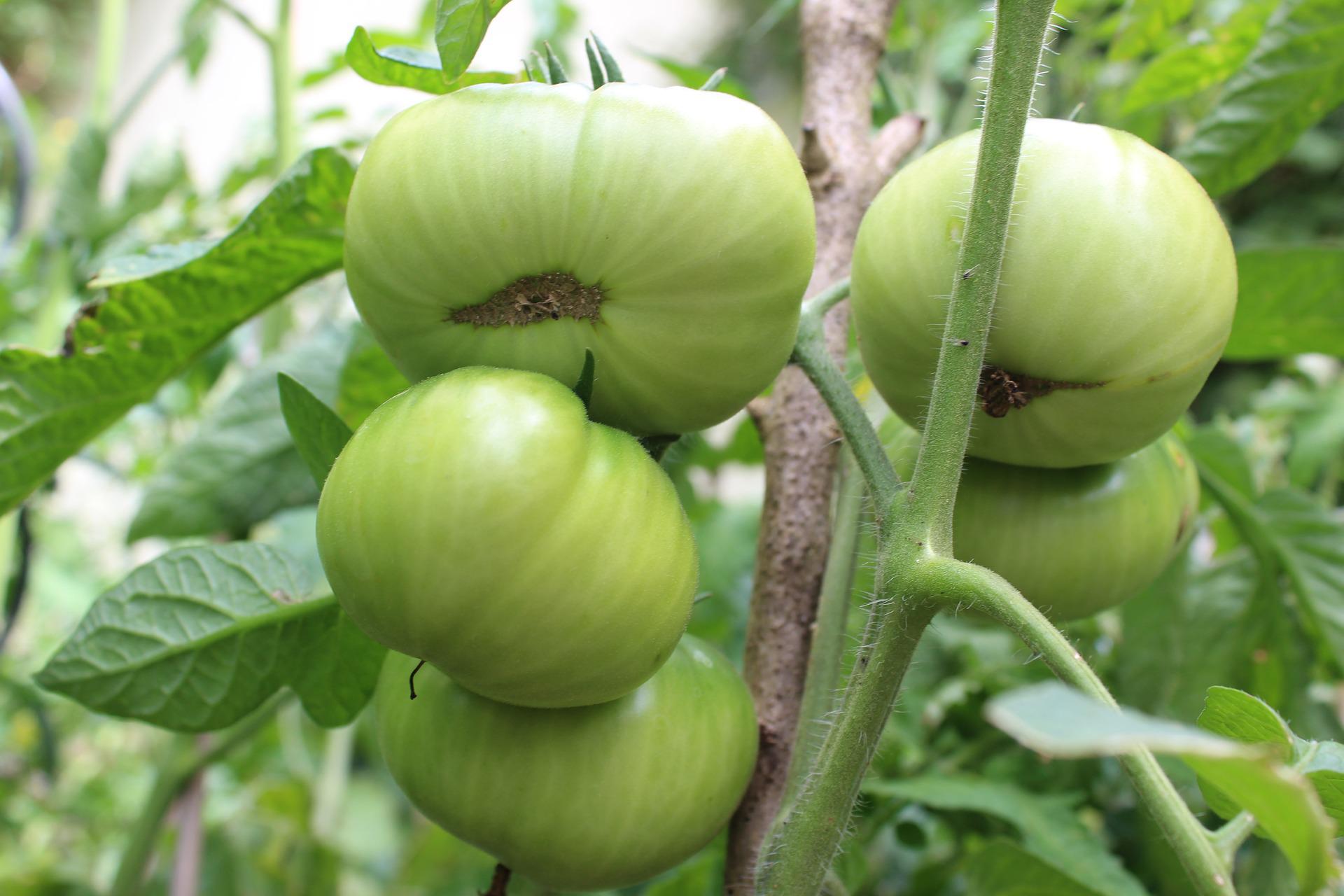
This is the Fried Green Tomato Stage. I’m not talking about the movie here, but rather the famous Southern comfort food. A tomato in this stage should be very firm, and its skin should be completely green. This is because a green tomato is an unripened tomato.
When I pick green tomatoes, it is because I plan to either fry or pickle them right away. Green tomatoes don’t fully ripen or develop flavor after being picked, so I don’t typically store them long. If I can’t cook with them immediately, I will place them in the refrigerator to slow further ripening.
If you love munching on green tomatoes, then, by all means, pick a few at this stage. Pickled and fried are not the only way to serve this versatile fruit. I highly recommend getting a few green tomatoes every season. My favorite variety to pick in the green stage is Beefsteak.
The Breaker Stage
In this stage, you should see about 10% of the tomato’s surface turning to a mature color, whether that is red, orange, pink, or yellow. Many gardeners opt to pick their tomatoes at this stage because they are considered fully developed.
I usually leave my tomatoes on the vine a little longer because I don’t have a lot of room in my kitchen to let them ripen properly. If you do have the room, here are a few reasons why you might want to pick tomatoes at this stage:
- The tomato can be transported easier than if left to fully ripen
- The tomato will ripen faster than if kept on the vine
- The risk of pests destroying the tomato is reduced
- The risk of sunburn and cracking is reduced
- The tomato will fully develop in flavor and texture
The Turning Stage
At this stage, tomatoes should have 10 to 30% of their mature color showing. Many gardeners choose this stage to pick their tomatoes, and there is nothing wrong with that. The tomatoes will ripen quickly and fully, and with them out of the garden, they are protected from weather and pests.
The reason I don’t pick my tomatoes at this stage is because of storage space. But, some years, I will grab a few turning stage tomatoes and stagger my tomato harvest. This is entirely up to you and your desires.
The Pink Stage
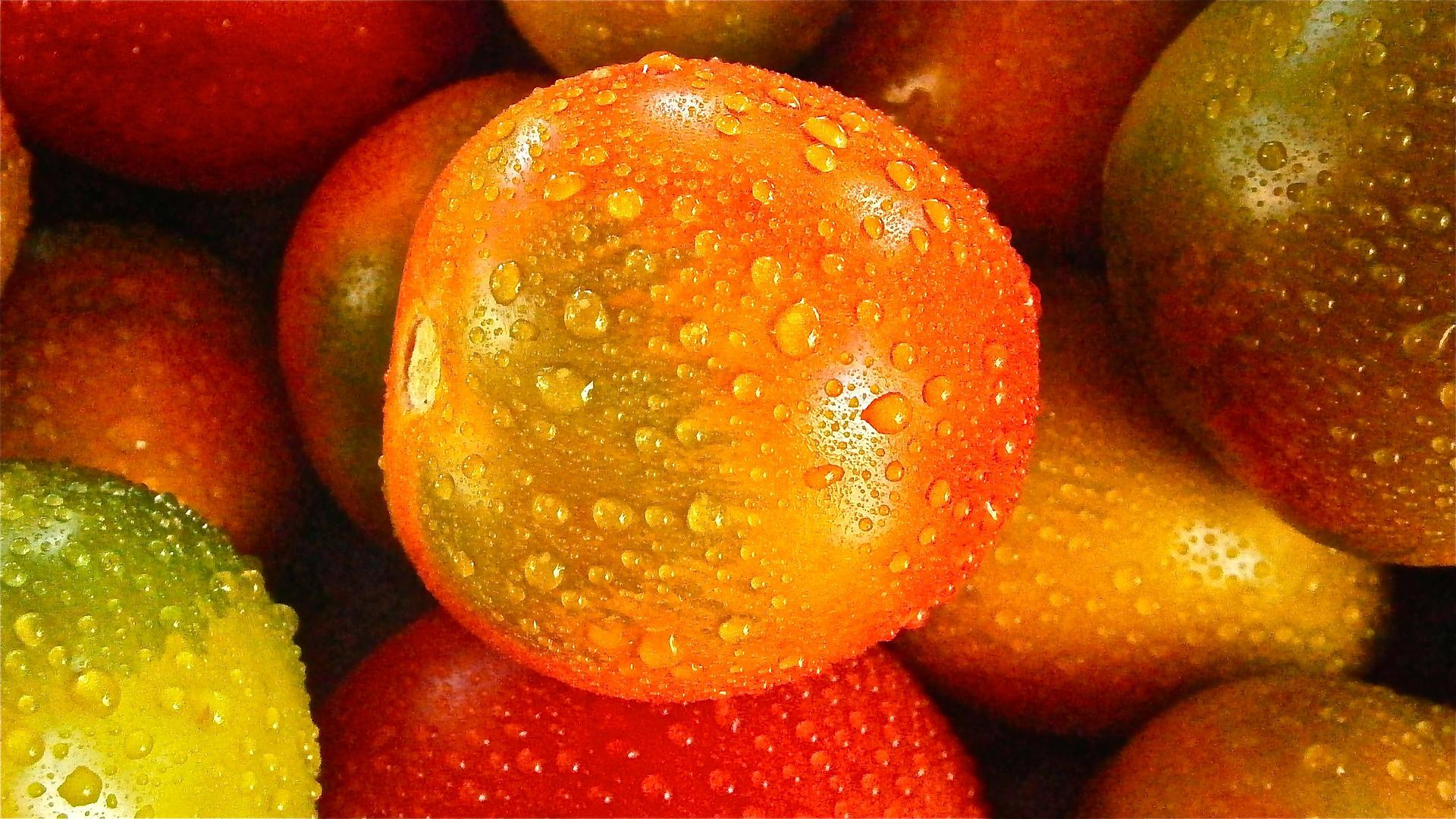
Once tomatoes take on 30 to 60% of their mature color, they have entered this stage. Pink stage tomatoes are slightly less firm than those in the turning stage, and they will ripen faster than tomatoes in any of the previous stages.
It is at this stage that I usually begin to pick my tomatoes. I feel like at this point I can keep up with the incoming crop, so my storage areas are not overflowing. Plus, I know I can always leave them on the vine longer if I don’t have room. You may not have that problem, so pick all the pink stage tomatoes you can.
The Light Red Stage
At this point, tomatoes should be covered with 60 to 90% of their mature color. While I do think it is nice to let tomatoes stay on the vine this long, especially if you have a shortage of storage, like me, there are so many reasons why waiting this long can be bad.
Here are a few reasons why I don’t recommend allowing your tomatoes to remain on the vine until they are in the Light Red Stage:
- Rain can cause them to swell and crack
- The developing sugars attract more pests
- Their weight can cause them to detach from the vine or break the vine
- They are pulling nutrients from the plant, and this hinders the growth of other tomatoes
- They will ripen and spoil very quickly once picked
The Red Stage
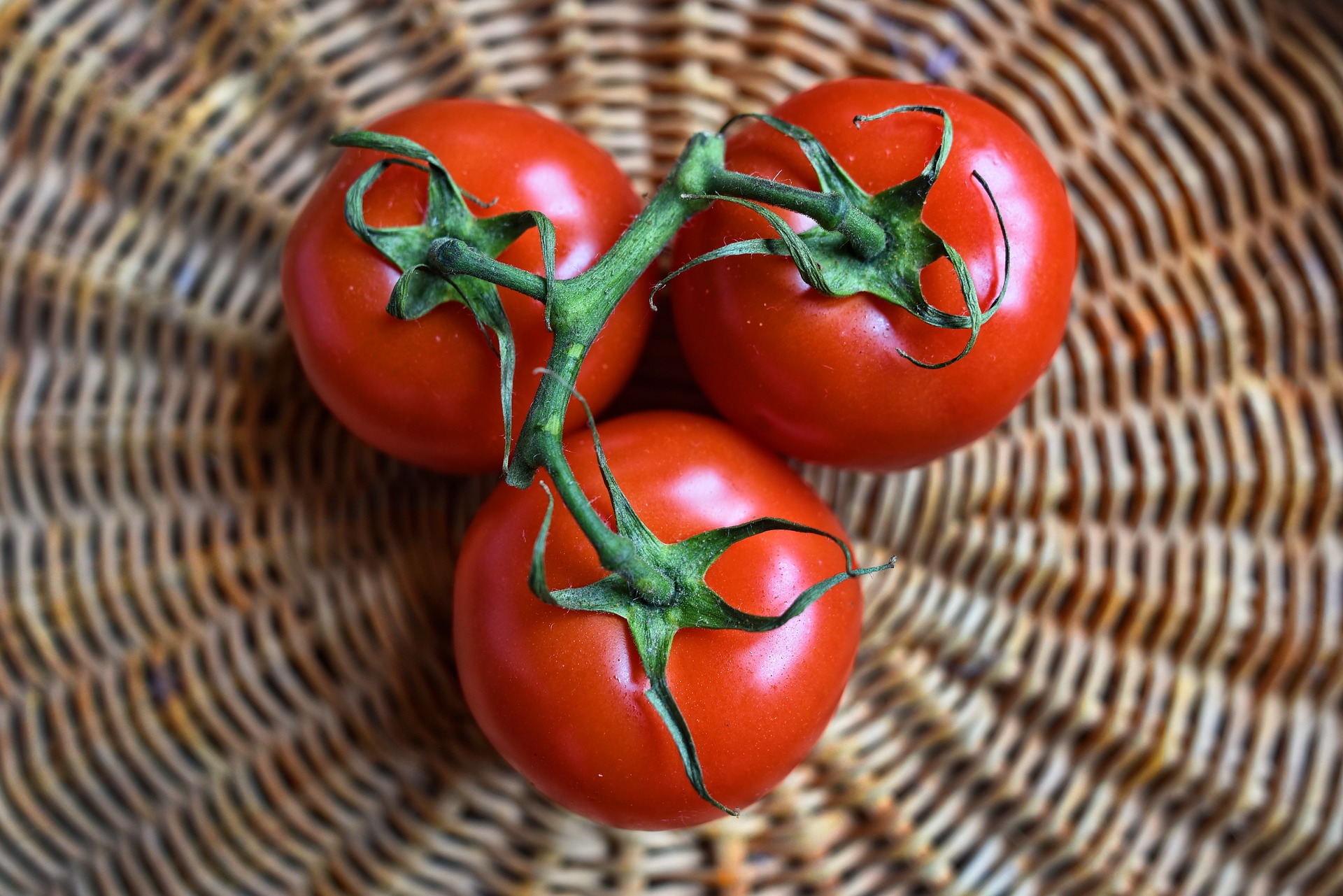
This is the final stage when the tomato is fully ripe and ready for use. If your tomatoes manage to stay attached and uninjured until this stage, you should be grateful. I rarely find a good tomato on the vine at this point, but when I do, I pick it immediately.
Another reason why I don’t allow my tomatoes to ripen on the vine up to this stage is that they must be used quickly. A red stage tomato is at the perfect point for eating, and waiting too long will give it time to spoil. If I can’t use tomatoes at this stage immediately, I set them in a refrigerator to slow down the spoiling process.
Comparing & Contrasting
Now that we have looked at each stage during the ripening process of a tomato, I want to give you a chance to compare and contrast them. My personal opinion is that tomatoes should be picked well before they are fully ripe, but I want you to decide for yourself. Here are some pros and cons that may help you make that decision.
The Pros and Cons of Picking Unripe Tomatoes
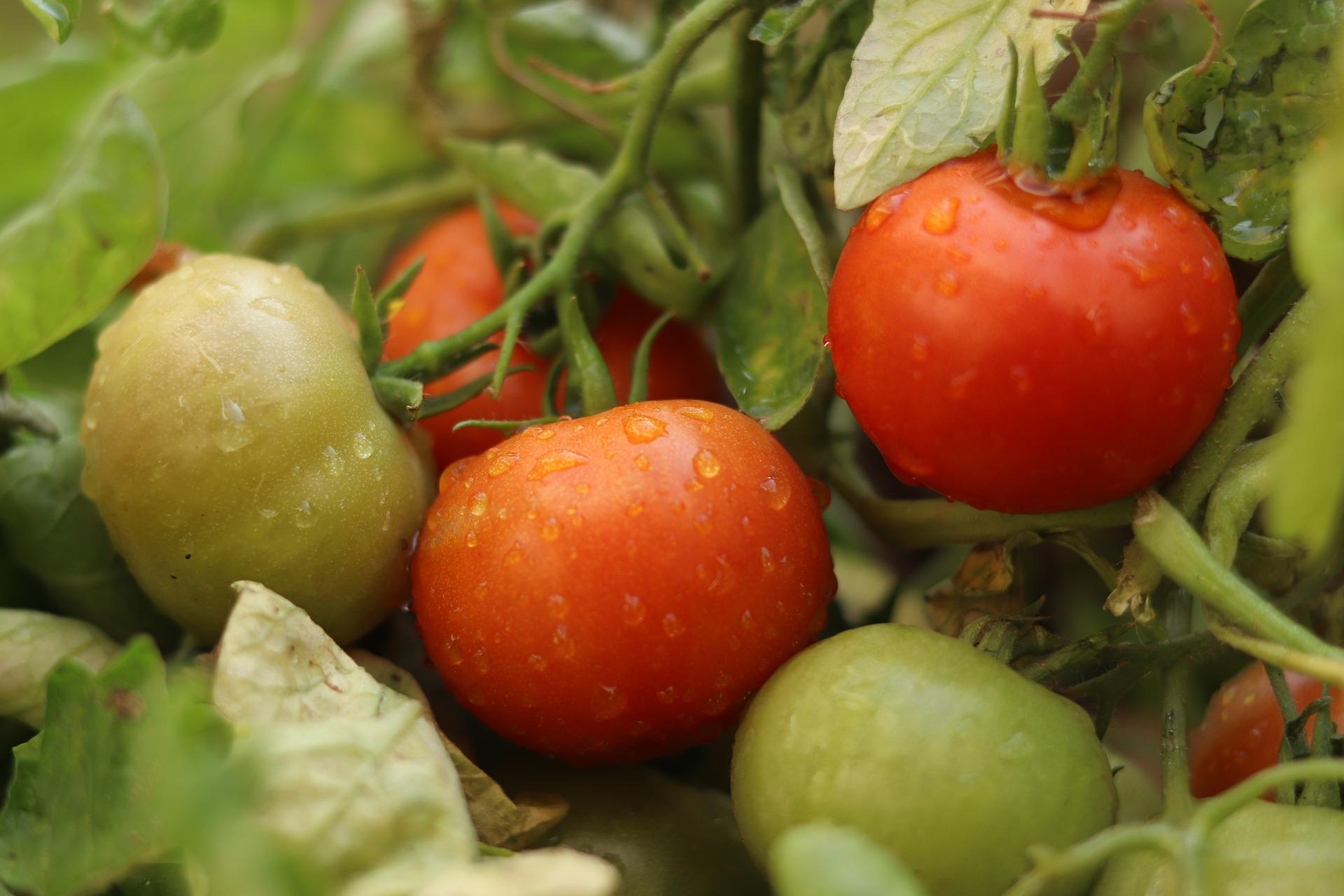
Pros:
- The risk of pests or outdoor critters eating the fruit is reduced
- The risk of weather damage is reduced
- The risk of cracking and splitting is reduced
- The tomatoes will ripen in a reliable manner
- Nutrients from the plant are diverted to growing new tomatoes
- Taste, texture, and nutritional value are not different from tomatoes left on the vine until fully ripened
Cons:
- The tomatoes will take time to fully ripen
- The ripening tomatoes will take extra space in your home, porch, or garden
The Pros and Cons of Picking Ripe Tomatoes
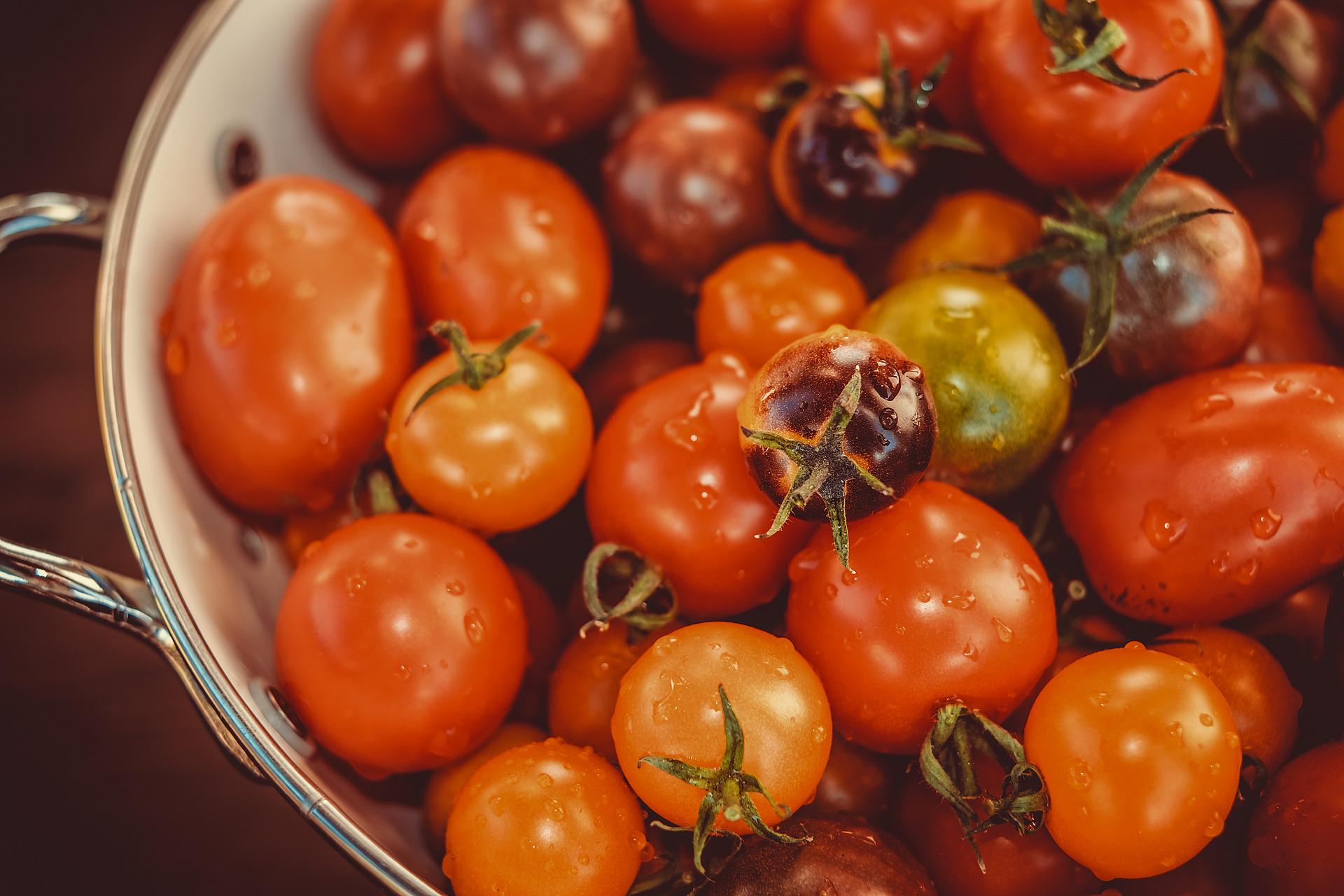
Pros:
- There is no need to use any other space to ripen your tomatoes
- Fully ripe tomatoes can be picked and used immediately
Cons:
- Fully ripe tomatoes attract pests and critters that may eat them
- Fully ripe tomatoes are more susceptible to weather damage when left on the vine
- Fully ripe tomatoes are more susceptible to cracking and splitting when left on the vine
- Fully ripe tomatoes do not have any more nutrition than those picked at a partially-ripened stage
- Fully ripe tomatoes pull nutrients from the plant that could be used to produce more fruit
How to Harvest Red Stage Tomatoes
Although I don’t advocate for harvesting red-stage tomatoes, I feel that I would leave an information gap in this article if I didn’t discuss how to harvest them. Please note that some of the points in this process apply to tomatoes in other stages as well.
Mind the Seed Packet
Don’t just toss the seed packet in the trash after planting your tomatoes. This little paper has a lot more to give. Either keep the packet or jot down the pertinent information on it.
You’ll want to know what variety you planted when to transplant the sprouts outdoors and how many days from transplanting it will take that variety to reach maturity. With this information, you can surmise when your tomatoes should reach the red stage.
Look, Feel, and Smell
- Examine the color of the tomatoes on the vine. If their skins are a fully mature color (red, yellow, orange, purple, etc.) and the color is deep and dark, then the tomatoes should be at the red stage.
- If looking at the tomatoes’ skin color doesn’t help, then feel the tomatoes. A red stage tomato should be slightly firm but have a little give when gently squeezed.
- A third tell-tale sign of a red stage tomato is its fragrance. If the tomato has that very distinct tomato smell, you can bet it is fully ripe and ready to eat.
A Tough Tug
Test a tomato’s ripeness by giving it a gentle tug. If it is ready for picking, it should detach from the vine without much trouble.
I would like to include a caveat to this test because it is so easy to destroy a beautiful tomato by plucking it from the vine. Instead of pulling a tomato at any stage, I highly recommend that you cut it off the vine with pruning shears. This reduces damage to the tomato, the vine, and unpicked neighboring tomatoes.
How to Ripen Unripened Tomatoes Off the Vine

Unless you’re picking greens or red stage tomatoes, you will need to make time and space to ripen those unripened tomatoes. Don’t worry, this is an easy process. Mostly it’s just setting up and letting the tomatoes do their thing.
Pick a Space
The unripened tomatoes should be set in a spot that is both cool and shady. The temperature should range from 65-70° F. Any sun that reaches the tomatoes should be indirect.
- No sunny windowsills – this will cause the tomatoes to blister and split
- No refrigerators – this will halt the ripening process
Give ‘em Space
The unripened tomatoes need plenty of airflow in their cool, shady spot. My personal favorite space is a homemade rack built with 2 x 4’s and hardware cloth. This rack is uncomplicated and can be built to size. I highly recommend you try one for your tomatoes.
- No touching – Ripening tomatoes should not touch each other since this can cause them to spoil
Try a Wrap

If you need some of your tomatoes to ripen faster, then wrap them in a newspaper. The paper will hold in the ethylene gas and cause the tomato to work through the ripening process a bit faster than normal.
FAQs
Answer: The type of tomatoes you grow can make a difference in when and how you should harvest them. Let’s talk about three of the most popular types to give you an idea of how tomatoes vary in their growing and harvest seasons.
Cherry tomatoes should not be harvested at one time. Since this type of tomato grows on a truss, the ripening tomatoes can weigh down the truss and take nutrients from developing fruits. Instead of waiting for all the tomatoes on the truss to reach the red stage, I recommend that you look for and pick individual tomatoes when they reach the stage you think is ideal. This applies to current and grape tomatoes as well.
Heirloom tomatoes should be picked before they reach the red stage. I think they get too heavy for their vines, and they are too attractive to pests to leave outside. Again, you can grow them any way you want, but I have found that they do best when they are picked at the pink stage.
Roma tomatoes are another tomato type that I prefer picking at the pink stage. Some gardeners like to leave them a little longer, so they develop more of that red skin that is excellent for pasta sauce, but this is not necessary. Again, it is up to you.
Answer: Yes, but only if you have not transplanted it to a garden plot. Once a tomato plant is set in a garden plot and its root system is developing, you should allow any blooms to continue growing. These blooms, after all, are the places where tomatoes will eventually grow.
Answer: The answer will depend on whether your tomato plant is determinate or indeterminate. A determinate plant will only produce one harvest a season. An indeterminate plant can produce up to three harvests in one season.
In Conclusion
In my opinion, picking tomatoes is not a complicated procedure. You simply decide what you want to use your tomatoes to make and whether you have enough space to ripen tomatoes outside of your garden. Once you have decided on these two things, picking tomatoes will be a breeze. At least, that is how I hope you feel after reading this article.
Sharing my ideas and opinions with you has been a fun process for me. Writing this has solidified that selecting pink stage tomatoes is the best for my gardening and cooking styles. Hopefully, the information within this article has helped you to solidify which stage is best for your styles as well. May your tomato harvests be plentiful from here on out.

